
National Park Service Shares 2024 Gauley Season Details (WV)
08/23/2024 - by Kevin Colburn
American Whitewater is happy to share an open letter to boaters from the great rangers and staff of the Gauley River National Recreation Area, which contains some new information this year. This letter will keep you up to date on important management actions of the National Park Service on the Gauley River for the 2024 season. In addition, as part of our agreement with the land owner, there is no camping allowed on the Legg field that American Whitewater leases for overflow parking. As always, respect this and other private property. Enjoy, be safe, and be ready to help others out there.

Packrafting: Paddling Remote Locations
12/13/2021 - by Luc Mehl
In this article, guest author and experienced backcountry paddler Luc Mehl offers insights into planning for remote whitewater adventures with a special emphasis on packrafting. Whether a hiker jumping into a packraft to get from Point A to Point B, or an experienced paddler wanting some backcountry tips, this article is excellent food for thought - and action.
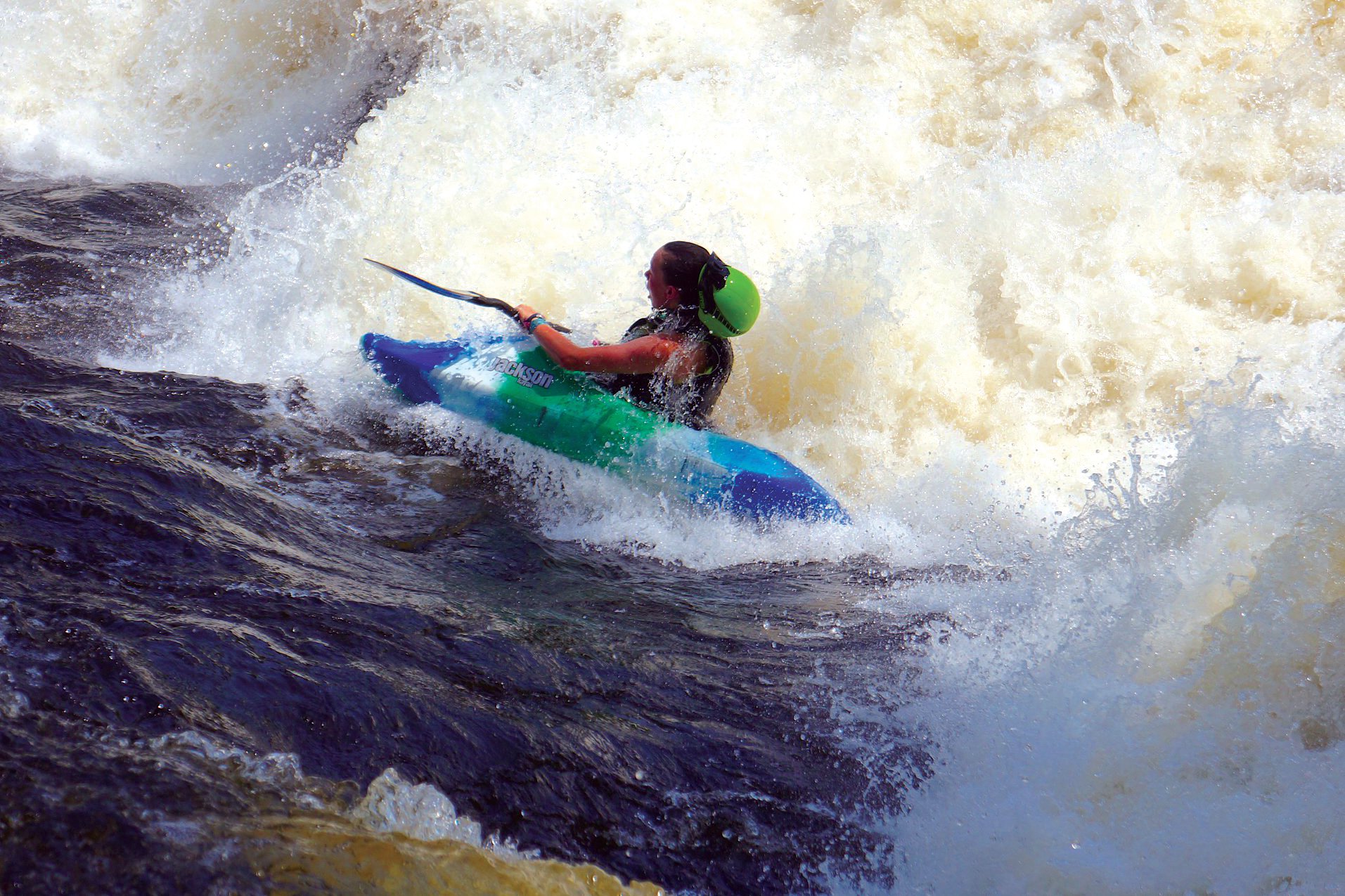
Thirteen River Rookie Mistakes to Avoid
09/16/2021 - by Teresa Gryder
Safety Editors Note. Teresa Gryder is a former river guide and a whitewater paddler with decades of experience. For the past few years, she's been writing and creating safety-focused events for the Lower Columbia Canoe Club. Her work is so impressive that I invited her to share her ideas in a regular column for the American Whitewater Journal. Welcome, Teresa; AW readers, enjoy. You are in for a treat!
-Charlie Walbridge, AW Safety Editor
When you’re good at something you can look at a new participant and know if they have a clue—or not. When you ARE that new participant, especially in whitewater boating, you need all the help you can get. So to keep your rookie status out of the spotlight, here’s a list. Everybody makes these mistakes sometimes, but guard against them. Mistakes don’t make you a bad person. They just mean you should slow down and get more systematic about your approach.
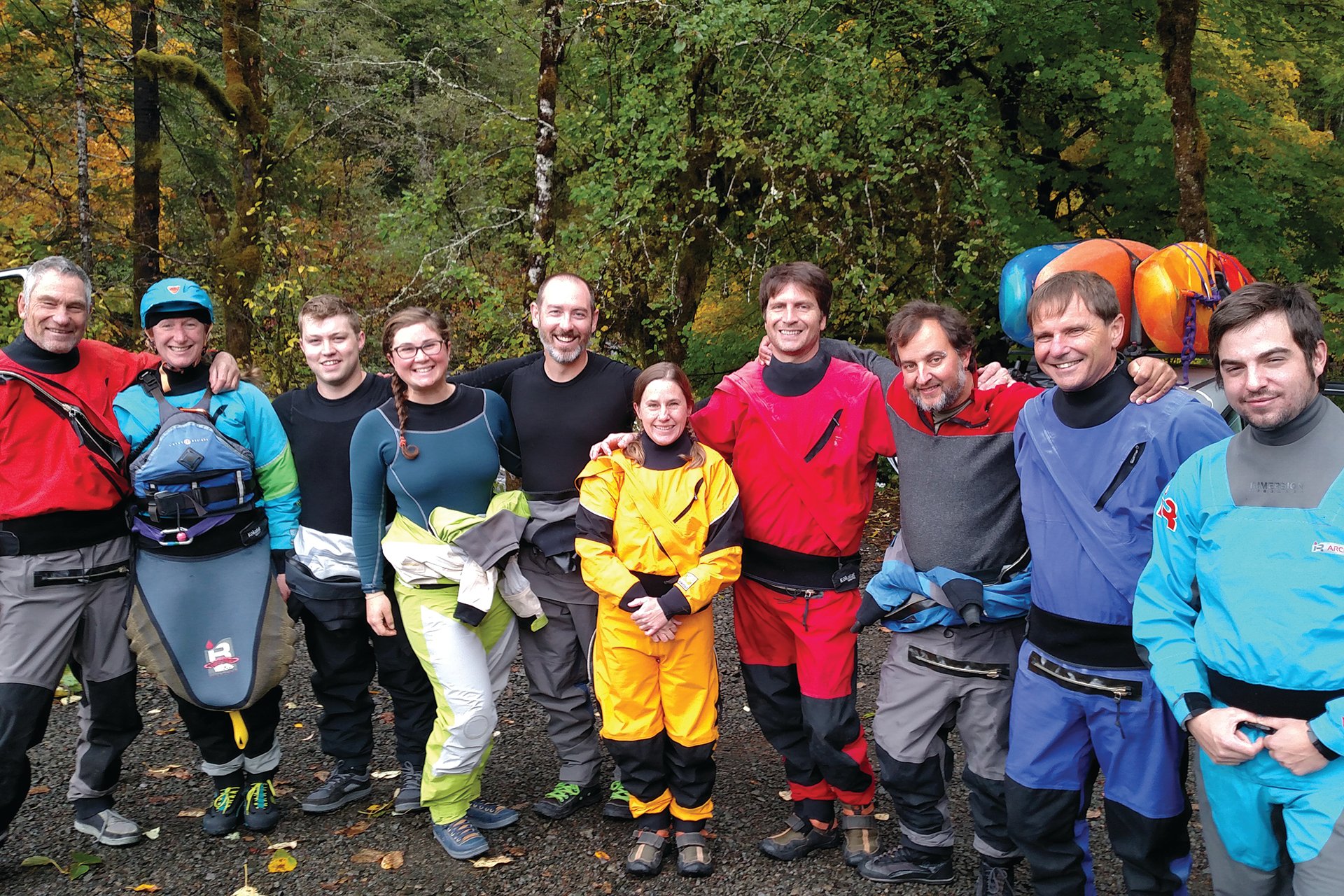
Safety Talk – The Human Factor
09/16/2021 - by Teresa Gryder
Safety Editors Note. Teresa Gryder is a former river guide and a whitewater paddler with decades of experience. For the past few years, she's been writing and creating safety-focused events for the Lower Columbia Canoe Club. Her work is so impressive that I invited her to share her ideas in a regular column for the American Whitewater Journal. Welcome, Teresa; AW readers, enjoy. You are in for a treat!
-Charlie Walbridge, AW Safety Editor
This column is about river safety. The topic that has captured my interest lately is how we make decisions. Humans are more intuitive and less rational than we like to admit. We make default “decisions” all the time without even knowing it.
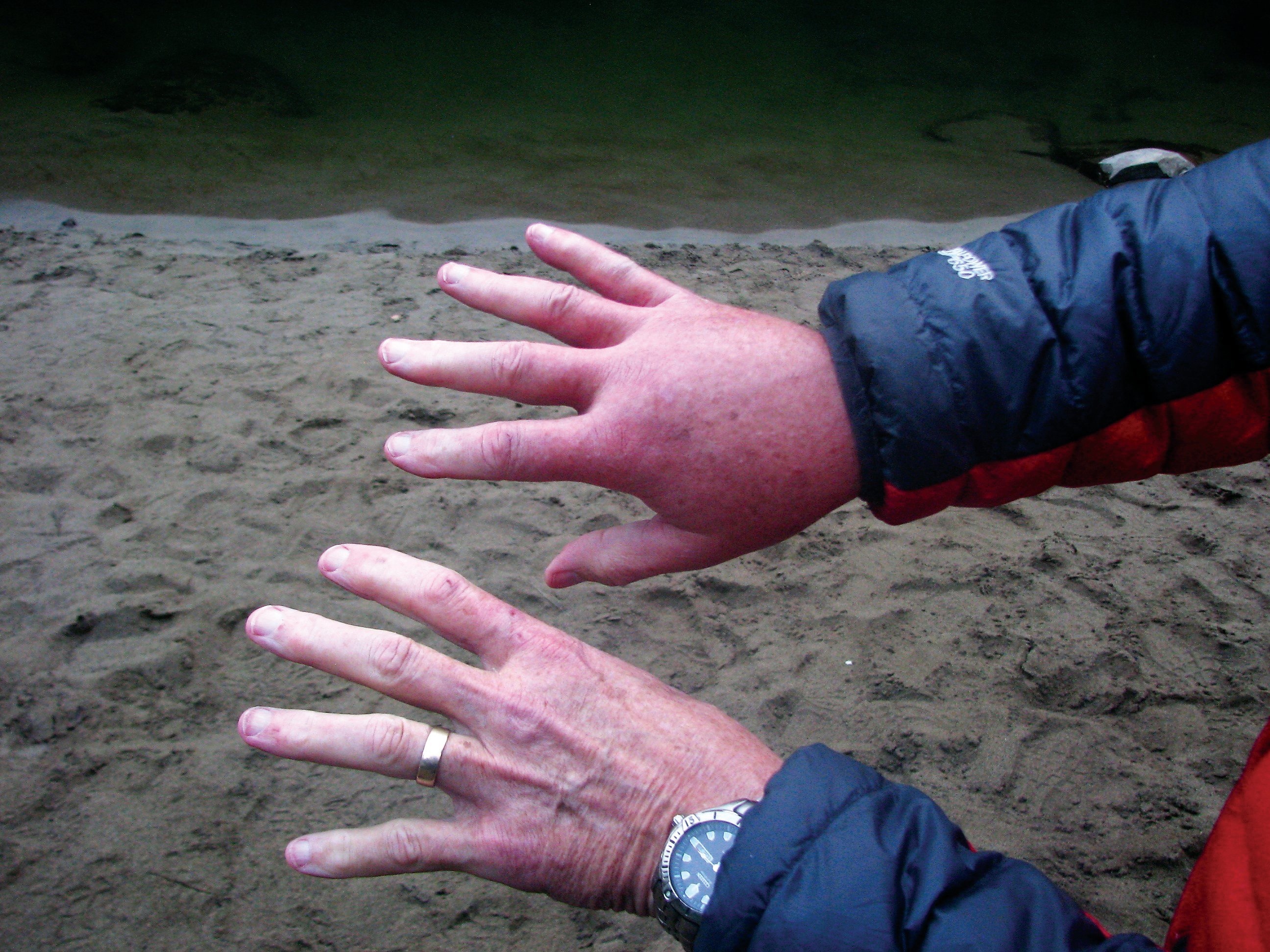
SELF SUPPORT SAFTEY
08/26/2021 - by Teresa Gryder
For part one of this series I wrote about paddling, rolling and portaging a loaded self-support kayak. Part two covered the basic gear you might use and why. In this part (three) we will consider some of the variables that contribute to safety and survival during a multi-day trip in a wilderness river environment.
The unexpected, the unfortunate, the unimaginable—it happens. We all know it and yet our powers of denial are impressive. We tell each other to “be safe” when we know our world is not safe, and our hobbies aren’t either. When things go wrong we tell one another, “It will be all right,” when really, we have no idea.
In the context of wilderness paddling, it’s valuable to acknowledge that Mother Nature is dynamic and often more powerful than we can comprehend. For us to survive on wild rivers we must be realistic about our situation and resources, and make reasonable decisions. There are no guarantees, but by being conscious and conservative we can adjust the odds in our favor. One of the most important purposes of this article is to emphasize that the risk calculation for a multi-day wilderness trip is different than for a roadside day trip.
For the most part whitewater accidents happen because of familiar hazards and mistakes. Some common denominators are cold water, fast-rising water, inadequate clothing, failing to wear pfds, continuous whitewater, and strainers in the river. These challenges injure and kill whitewater paddlers every year. If you are considering self-support kayaking, I hope that you are well versed in how to minimize the known risks.

Midnight Miracle at Kanawha Falls
11/09/2020 - by Charlie Walbridge
A Tennessee kayaker was rescued after spending 8 hours trapped behind the veil of Kanawha Falls, a 15 foot drop located below the confluence of the New and Gauley Rivers in West Virginia. The victim was paddling alone; a fisherman spotted his loose kayak and notified authorities. Top expert kayakers from Fayetteville, WV teamed up with WV-DNR officers and first responders to locate and rescue the man. Read their remarkable first-person accounts in the American Whitewater Accident Database: https://www.americanwhitewater.org/content/Accident/detail/accidentid/112642
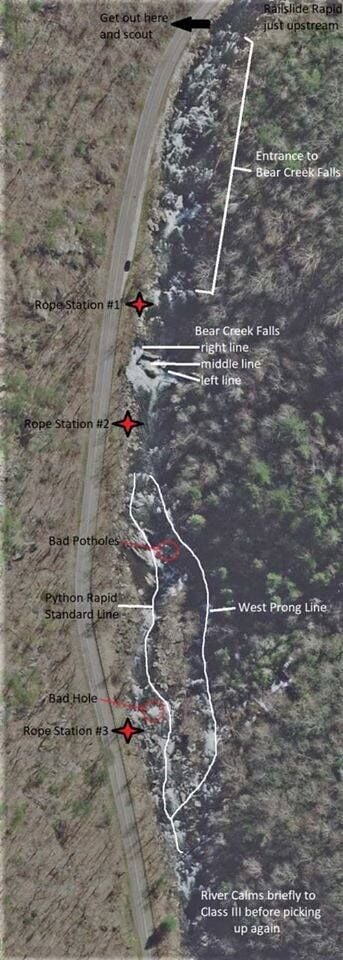
A Close Look at Cheoah River Fatalities
06/29/2020 - by Charlie Walbridge
The recent death of Chris Clark at Python Rapid on North Carolina's Cheoah River is the third at this site in the last six years. In each case, the person who died was an expert paddler and their paddling partners did not see exactly what happened. Let's take a close look at the Cheoah below Bear Creek Falls and develop strategies for future runs. The river here is very fast and continuous. After a fast lead-in (Chaos), the river drops over Bear Creek Falls, a 12' drop. Below, most of the flow pushes toward the river right channel (Python). Ferrying over to the easier river left channel (the West Prong) requires careful boat control. Python itself contains several nasty holes and sieves, with a bad hole blocked by a boulder at the bottom. There is a good route through it, but paddlers need to plan their route carefully. Scouting is a good idea for first timers, although catching eddies and getting out is not going to be easy. Groups need to stay together.. The rapid is tough enough that you can't watch your buddy all the time, but you can be ready to help if needed. Click through for links to the accident reports, photos, and comments from expert Cheoah River paddlers. (Photo above by Boyd Ruppelt)

Kayakers assist the WV-DNR on a Recovery
04/14/2020 - by Charlie Walbridge
On February 9th, 2020 kayaker Jamie Gray was killed on the Middle Fork of the Tygart river in West Virginia. The next day the state DNR closed the river while they searched a large undercut rock where she was last seen. When that effort was unsuccessful, DNR officer Chris Evans coordinated with local kayakers to do a thorough downstream search. They found her body on the Main Tygart a mile downstream, just above S-Turn Rapid. A full description of the search and the recovery can be found in the American Whitewater Accident Database: https://www.americanwhitewater.org/content/Accident/detail/accidentid/76310
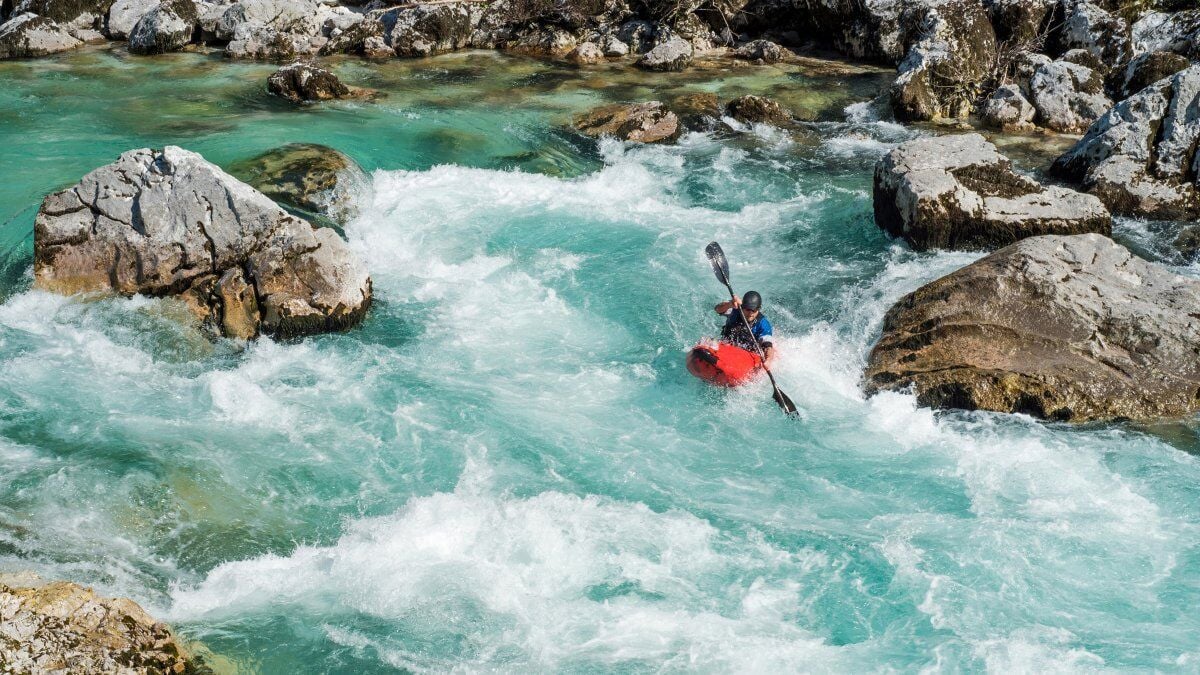
Good Article on Flush Drowning from Outside Magazine
04/14/2020 - by Charlie Walbridge
An interesting article in Outside Magazine, based on a research paper done with information stored in the American Whitewater Accident Database. Certainly cold water plays a big role in a flush drowning death, especially when the swimmer has inadequate thermal protection. In addition to cold water shock, a few drops of cold water down the throat can cause laringospasm, which narrows the trachea and can make breathing very difficult. But in my opinion, the relentless, fast moving character of Western rivers is the main reason that flush drownings are more common there. With the exception of the Cheoah and flood-stage runs, few Southeastern rivers can compare to an average Western Class IV. Here's the link: https://www.outsideonline.com/2411473/flush-drowning-whitewater-deaths-study?fbclid=IwAR2-blIEjgNu7tFBgXxT4ozlyfNw0Yc6yt41pao9daWRdmGvloxpqyb3ovQ

Keep it in Your Zip Code – How to Paddle in a Pandemic
04/01/2020 - by Evan Stafford
Our friends at Outdoor Alliance recently released How to Get Outside (during a pandemic), a set of guidelines for recreating in the most responsible way possible. We borrowed their considerations and added some paddling specific ideas. This is an important time for paddlers to be a part of the solution to both help slow the spread of COVID19 and advance stewardship efforts for your favorite rivers. The first step is simple - stay in your zip code. A short abstinence from paddling outside your neighborhood can save lives and keep the delicate balance that ensures enough water to boat and river access in many rural communities from shifting in the wrong direction. Maintaining constructive relationships with communities where we recreate is in our long-term interest as we work with them to improve the health of rivers and our opportunities to enjoy them.

Community Voices: Respect the River, River Surfers Should Wear PFDs
07/09/2019 - by Brittany Parker
I can't keep my mouth shut any longer. I've been troubled the past couple weeks with the direction river surfing is going. I've been wrestling with bringing it up because I'm afraid of alienating myself and getting crucified online by the river surfing community. But this isn't about me, this is about the future of our sport and the lives of others.
I don't like surfing in the river alone. And lately, even with a 15 person deep line up at the wave I feel alone. I feel alone because I am one of maybe two or three there wearing a PFD, or sometimes the only one. I feel alone because if something were to happen, like getting knocked unconscious or my body cramping up, I don't have faith that the people in the line up could save me.

NEW WILD AND SCENIC RIVERS SIGNED INTO LAW WITH PUBLIC LANDS PACKAGE!
03/12/2019 - by Evan Stafford
With the President's signature today, 621 miles of new Wild and Scenic Rivers have been established through the John D. Dingell, Jr. Conservation, Management, and Recreation Act (Public Law 116-9). With strong bipartisan support, this legislation passed the House by a vote of 363-62 on February 26th. It passed the Senate by a vote of 92-8 on February 12th. Please reach out to your lawmakers in both the House and Senate to thank them for following through on this commitment, and we make it super easy through our easy action templated forms. A personalized touch will make sure your representatives read your thank you and the forms only take a moment to update with an individualized comment about why protecting wild rivers and the recreation opportunities they provide is important to you.

Tow Tether Danger Highlighted by Recent Accident
02/25/2019 - by Charlie Walbridge
Nancy Kell, a very experienced Mid-States kayaker, died on February 24th after flipping in a Class II rapid on West Virginia's Red Creek. There were a number of strainers in the vicinity above and below the water. One of them snagged her tow tether, pulled her out of her boat, and held her under water. She was with a very experienced crew but they could not reach her quickly enough. Equipment snags are a real risk. In the light of this accident I strongly urge anyone using a cowtail, pigtail, or tow tether to recheck your setup, and to consider whether wearing a tow tether makes sense. Be certain that your tether releases cleanly at both ends. Do not attach the front carabiner to a non-releasable point, like a pocket or strap. Ms. Kell did this, and it may have been a contributing factor. Apparently many current rescue PFD designs to not feature a front release point! Do not attach a tether to the rear of your PFD with a non-locking carabiner, as that may inadvertently clip into a rope. The tether should fit very snugly, without sagging, but as the photo shows Ms. Kell did that, and it did not protect her! The harness release should be quick and foolproof. Practice harness releases under pressure before using it on the river. Finally, remember that any additional strap is a potential snag hazard. Ask yourself if the usefulness of a tow tether is worth the risk, especially on small, strainer infrested creeks. Carry it in a PFD pocket or dry bag if necessary. Click for a link to the report in the AW Accident Database. (Jeff Macklin Photo)

New Graphics Summarize 20 Years of Accident Data
01/01/2019 - by Charlie Walbridge
Charlie Duffy has created a series of graphs summarizing the contents of the Accident Database over the last 20 years. Along the way, he searched our files for any errors and duplicates and corrected them. Click through to scroll through these fascinating charts or to download them for your use.
Support Colorado River Access on Colorado Gives Day!
11/29/2018 - by Kestrel Kunz
Colorado Gives Day is on December 4 this year and is fast approaching! Go here to schedule your online donation to support American Whitewater's Colorado River Access Program. All donations made to American Whitewater on Colorado Gives Day (December 4) will be put towards our River Access Program in Colorado. American Whitewater works to improve river access and public safety throughout the state by working with landowners and managers, paddlers, law enforcement, and lawmakers to understand Colorado's river access laws and the ongoing threats to public safety. Thank you for your support!

American Whitewater Announces Endowment
07/30/2018 - by Mark Singleton
American Whitewater is pleased to announce the creation of an endowment to promote safety education and outreach. The endowment will support "promoting whitewater safety, responsible on-river behavior, safety education and outreach, and maintenance of the American Whitewater Safety Code and Whitewater Accident Database.' Anyone wishing to add to the fund can simply make a donation to American Whitewater here and include safety education in the comment field of the donation.
Apple and Android AW Apps Now Available!
07/26/2018 - by Kevin Colburn
American Whitewater is pleased to announce that a free iPhone App is now available that shares realtime details on the over 5,500 whitewater runs in our National Whitewater Inventory. The new location-enabled app allows paddlers to learn about nearby rivers within a selected distance or state, and safely pick trips that meet their group’s skill level, flow preferences, and timeframe. It offers enhanced mapping and links paddlers to the rich crowd-sourced information and river-related news on the American Whitewater website.
Ohiopyle State Park Updates River Regulations
03/30/2018 - by Charlie Walbridge
This past fall American Whitewater met with Ohiopyle State Park managers to discuss possible updates to their whitewater paddling regulations. The first topic was to change the rules governing raft sizes at different water levels to recognize the capabilities of self-bailing rafts. Shorter self-bailing boats will now be allowed to run the river at high water. Some small changes to the regulations will make Ohiopyle Falls more accessible to paddlers. A change in the way the gauge is interpreted should make the falls "legal" on more days. Although whitewater paddlers are only one part of the vast public that visits the park, every effort was made to accommodate them while avoiding user conflicts and safety hazards. Special thanks goes to Ken Bisbee, Ohiopyle State Park Operations Manager and John Hallas, a former Ohiopyle State Park Operations Manager who is now Director of State Parks. Click here to read the updated Ohiopyle River Regulations:
American Whitewater Announces Safety Database Upgrade
04/01/2017 - by Charlie Walbridge
After over a year's work American Whitewater has released an upgraded version of their Whitewater Accident Database. It's the largest collection of its kind in the world, with over 1600 fatalities and close calls dating back to 1972. Each report has been checked for accuracy and AW Webmaster Ryan Groth greatly improved the search capacity. You can now locate accidents by a dozen different categories and characteristics. Here's how this project came about, how it evolved, why American Whitewater reports accidents and how you can help us keep this project going in the coming years.
